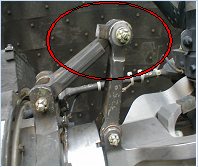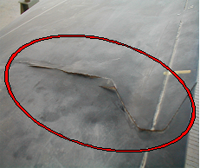Vibration Causes Components and Structures to Wear and Fail Prematurely, Never Reaching Their Designed Time Before Overhaul (TBO)
 Helicopters require significantly more maintenance than fixed-wing because
theyʼre significantly more complex. The Apache Program Managerʼs (PM) Office has
encountered a number of challenges in dealing with inherent dynamic drivetrain
vibration. This vibration causes components and structures to wear and fail
prematurely, never reaching their designed Time Before Overhaul (TBO). This
creates added burden in areas such as logistics and operational readiness,
safety of flight, airworthiness, and numerous other areas inherent in the operation
and support of a major aircraft program. The current prolonged surge in aircraft
utilization in the Global War on Terror has caused an unplanned acceleration of
the airframeʼs useful life resulting in a strenuous burden on the Operations &
Support budget and the soldier. The common theme to solving these dynamic
component concerns is the requirement to perform new special maintenance
inspections and subsequently replace components. Apache users worldwide have
borne the cost of dynamic components failing long before their scheduled TBO.
Helicopters require significantly more maintenance than fixed-wing because
theyʼre significantly more complex. The Apache Program Managerʼs (PM) Office has
encountered a number of challenges in dealing with inherent dynamic drivetrain
vibration. This vibration causes components and structures to wear and fail
prematurely, never reaching their designed Time Before Overhaul (TBO). This
creates added burden in areas such as logistics and operational readiness,
safety of flight, airworthiness, and numerous other areas inherent in the operation
and support of a major aircraft program. The current prolonged surge in aircraft
utilization in the Global War on Terror has caused an unplanned acceleration of
the airframeʼs useful life resulting in a strenuous burden on the Operations &
Support budget and the soldier. The common theme to solving these dynamic
component concerns is the requirement to perform new special maintenance
inspections and subsequently replace components. Apache users worldwide have
borne the cost of dynamic components failing long before their scheduled TBO.
For example: Failures of the main transmission accessory gearbox overrunning
clutches have resulted in the transmission being removed every 1,000 hours for
clutch replacement followed by a transmission overhaul at the next 1,000 hours
of operation; the auxiliary power unit (APU) power take-off (PTO) has been
replaced with a completely redesigned/reengineered Commercial Off-the- Shelf
Supply Initiative clutch; Another example is the ability for the intermediate
gearbox (IGB), tail rotor gearbox and main and tail rotor blades to reach
designed TBO have been adversely affected.

Other examples of vibration related concerns;
Structural damage to the aircraft, cracking in the 2L stringers and 530 and 545
bulkheads, existed. The latter issue resulted in an elastomeric vertical
stabilizer mounting modification work order (MWO) at a significant cost in terms
of dollars, aircraft readiness, and aircrew combat readiness.
Avionics systems such as Target Acquisition/Designation System, Pilot Night
Vision System, and associated “black boxes”, are adversely affected by vibration
generated from an unbalance drive system. Drivetrain components such as
driveshaft, rotor blades, great boxes, etc, are being balanced independently at
the manufacturer level and delivered to the assembly line as a “balanced
component”. When all the parts are assembled on to the aircraft, the entire
aircraft drivetrain is not balanced “as one unit”. Therefore, vibrations are
traveling along the entire aircraft drivetrain and fuselage. During flight,
torque is forced on drivetrain components and vibration at one area of the
aircraft is transmitted to another area.
For example:
 It is possible that current vibration monitoring systems will alert a high
vibration in the intermediate gearbox, historically a location of high vibration
problems. In reality, the root cause of high vibration can be in many places
along the drivetrain and the vibration is transmitted to the intermediate great
box area from the problem source area. The most common solution to IGB
vibrations is the replacement of the gearbox, which requires time and resources.
After the component is replaced, in most cases the problem still exists and the
aircraft continues to be grounded while maintainers do “guess work” to try and
find the cause / source of the problem and possibly replace additional
components.
It is possible that current vibration monitoring systems will alert a high
vibration in the intermediate gearbox, historically a location of high vibration
problems. In reality, the root cause of high vibration can be in many places
along the drivetrain and the vibration is transmitted to the intermediate great
box area from the problem source area. The most common solution to IGB
vibrations is the replacement of the gearbox, which requires time and resources.
After the component is replaced, in most cases the problem still exists and the
aircraft continues to be grounded while maintainers do “guess work” to try and
find the cause / source of the problem and possibly replace additional
components.




